Nutrition in hyperlipoproteinemia
introduction
Hyperlipoproteinemia is associated with an abnormal increase in blood lipid levels. These values refer to that cholesterol and (or) the triglycerides. The causes for this can be genetic. In the majority of cases, however, the cause is a combination of hereditary and diet-related factors. The very complicated fat metabolism can be influenced by numerous nutritional factors in very different ways.
In addition to an excessive intake of calories and the resulting obesity, the amount and composition of dietary fat, the cholesterol in the diet, the quality of the carbohydrates and the fiber intake are of particular importance. People who are overweight often lead to an increase in triglycerides and hypercholesterolemia. The so-called HDL cholesterol (high density lipoproteins, lipoproteins of high density) is decreased. It is also called "good cholesterol" because these proteins transport the insoluble cholesterol in the blood and are able to reabsorb cholesterol that has already been deposited. Therefore, the HDL level in the blood should be as high as possible. The LDL cholesterol levels (low density lipoproteins, lipoproteins with low density) are usually increased and the risk of vascular calcification increases. If you are overweight with obesity with a pronounced trunk (apple type), hyperlipoproteinemia is often associated with a decrease in the effectiveness of insulin and, as a result, an increased release. In addition, there is often high blood pressure and a tendency to thrombosis. This chain of symptoms is also called metabolic syndrome designated.
Further information on this topic is available at nutrition
Diet-related causes
Dietary fat and accompanying fat
- Saturated fat: (mainly contained in animal fats flesh, sausage, fatty dairy products) have the greatest cholesterol-increasing effect.
- Monounsaturated fatty acids: from vegetable fats like Rapeseed oil, olive oil lower total and LDL cholesterol
- Polyunsaturated fatty acids: Omega-6 fatty acids from vegetable oils such as sunflowers- or Wheat germ oil lower total cholesterol less than monounsaturated fatty acids.
- Omega-3 fatty acids: from cold water fish (Mackerel, herring, salmon) lower triglycerides in hypertriglyceridemia.
- Trans fatty acids: the majority of which are made from chemically hydrogenated fats, increase total and LDL cholesterol and lower HDL cholesterol. The effect on blood lipid levels is unfavorable.
- Dietary cholesterol: If there is an increased intake of cholesterol with food (from animal foods such as eggs, offal), the cholesterol content of the blood is hardly influenced negatively. However, there are few people who, due to their genetic predisposition, also develop a significant increase in blood levels when they eat high cholesterol
carbohydrates
Coupled with a reduction in the intake of saturated fats affects the increase in Carbohydrate intake have a positive effect on blood lipid levels. Total and LDL-Cholesterol decrease sharply. The Triglycerides often rise.
Fiber
They have a positive effect on blood lipid levels. If the Fiber content The daily intake of other nutrients is usually reduced. Most often there is a decrease in fat and sugar intake. The starch content of the food is increased and all these factors together are the cause of the beneficial effect on blood lipid levels.
Nutritional therapy for hypercholesterolemia
Also included in the case of high cholesterol levels increased body weight before, weight loss is the first step in therapy.
Otherwise, the following basic rules apply to a blood lipid-lowering diet:
1. Reduction of total fat intake to 30% of food energy.
With a daily calorie consumption of 2000 calories would be about 65g Total fat. This fat is made up of spread fat, cooking fat and hidden fat. Above all, saturated animal fats should be reduced flesh, sausage, milk- and Dairy products. These fats mostly come in hidden form. Also saturated fatty acids from vegetable fats like Coconut oil and Palm kernel fat are unsuitable. Saturated fatty acids should not make up more than 7 - 10% of the energy intake and only low-fat products are necessary (Meat, sausage, dairy products) to achieve this goal. Among the animal fats, the fats from cold water fish (Salmon, mackerel, herring) an exception. They contain Omega-3 fatty acids which have a beneficial effect on the cholesterol level. The intake of chemically hydrogenated fats and the trans fatty acids they contain should be avoided. These chemically hardened fats are found primarily in ready meals, deep-frying fats and cheap margarines. On the list of ingredients they always appear under the designation: vegetable oils, hardened or partially hardened.
Fat-saving cooking methods such as grilling, steaming in foil and cooking in coated pans also make it easier to save visible fats.
2. Increase in the proportion of mono- and polyunsaturated fatty acids
10-15% of the energy should come from monounsaturated fatty acids and only 7-8% from polyunsaturated fatty acids. In the past, polyunsaturated fatty acids were considered the most suitable for a long time Cholesterol levels to lower. These fatty acids can be found in, for example Safflower oil, sunflower oil, soybean oil and Wheat germ oil. It is now recommended to consume more monounsaturated fatty acids (from olive oil, rapeseed oil, peanut oil) than polyunsaturated fatty acids. These fats should also be used sparingly. Oils with a high proportion of monounsaturated fatty acids do not last as long and are less suitable for heating than oils with a high proportion of polyunsaturated fatty acids.
3. More complex carbohydrates and fiber
50% of your daily calorie intake is supposed to be out Carbohydrates come. The so-called "complex carbohydrates“Made from whole grain products, potatoes, pulses, vegetables and fruits. If this recommendation is followed, the dietary fiber content inevitably increases nutrition. This should ideally be 25 g per day. In order to have the cholesterol-lowering effect, (even if only slightly) of soluble fiber should be used Oat products, legumes and Pectin-rich fruits (Apples, pears, berries) be regular food components.
4. The daily cholesterol intake should be below 300 mg
The blood value can only be influenced very little by simply lowering the dietary cholesterol content. It is more important to have one low-fat diet to be observed according to the principles described above. Since cholesterol is only found in animal fats as an accompanying substance, and mainly in those with a high fat content, the reduction in total fat intake from animal fats and the reduction in the cholesterol content automatically run in parallel. Merely the consumption of particularly high-cholesterol foods like Offal, eggs, crusts- and Shellfish is to be restricted.
Nutritional therapy for hypertriglyceridemia
This increase in blood lipids is very often associated with being overweight, diabetes and higher Alcohol intake. If these causes are treated successfully, in most cases this will also decrease Triglyceride concentration in the serum. Obesity should be based on the principles of a low-fat, balanced mixed diet. For the nutrition If the triglyceride level is high, the same nutritional principles apply as if the cholesterol level is high. However, the following features must be taken into account:
- If possible, alcohol should be avoided completely.
- Sugar and sugary foods like Sweets, baked goods, sugared drinks should be very limited. Sugar substitutes (Sorbitol, xylitol, fructose are unsuitable. Sweeteners (Saccharin, aspartame, cyclamate) do not have a negative influence on the level of blood lipids and are suitable in small amounts.
- Whole grain products with a high fiber content are preferred.
- Prefer of Omega-3 fatty acids. Regular consumption of mackerel, tuna, salmon and herring.
Recommended foods
They should be a main part of the daily diet. you are fat- and low cholesterol or cholesterol free and or) high in fiber. The fatty fish and edible oils listed contain a favorable fatty acid composition. However, the amount consumed must also be limited here.
Edible oils:
- Rapeseed oil, olive oil
- Meat, poultry, sausage products:
- All lean meats, skinless poultry, corned beef, turkey breast fillet
Fish:
- All types of lean fish (pollack, cod, redfish, trout). Also herring, mackerel, salmon and tuna.
Milk and milkproducts:
- Low-fat milk (1.5%), buttermilk, low-fat quark, cottage cheese, hand cheese.
Eggs:
- protein
Cereal products:
- All wholemeal products. Bread, cereal flakes, oat products made from whole grain, corn, green spelled, buckwheat, millet, whole grain rice
vegetables
- All vegetables (fresh or frozen) as raw vegetables or cooked, prepared with low fat content, legumes
Potatoes
- Jacket potatoes (new potatoes with peel), boiled potatoes
fruit
- All types of fruit fresh or frozen. Unsweetened fruit compote, fruit ice cream or fruit sorbet made from unsweetened, pure fruit juice
beverages
- Mineral water, tap water, herbal and fruit tea without sugar, black tea and coffee in moderation, juice spritzer, unsweetened fruit juice, vegetable juice.
Other products
- Fresh and dried herbs, spices, mustard, vinegar
Food suitable in moderation
Products from this group should not be consumed every day or in large quantities.
Edible fats
- Sunflower oil, corn oil, wheat germ oil, nut oil, safflower oil, margarine with a high proportion of unsaturated fatty acids.
Meat and meat products
- Lean beef or pork with no visible fat. Cut away the fat edges! Lean cooked ham, salmon ham, turkey sausage and all other low-fat sausages. (In any case, lean cheese is preferable as a topping on bread !!).
fish
- Canned fish with sauce, shellfish and crustaceans, breaded fish.
Milk and milkproducts
- Low-fat cheeses up to 30% fat in the dry matter, quark with 20% fat, cream cheese
Eggs
- Two to three eggs per week (this also includes the eggs hidden in pancakes, for example)
Cereal products
- Light flour (type 405), light breads, sugared breakfast cereals and muesli mixes with added sugar, white, peeled rice, light pasta.
Potatoes
- Potato dishes prepared with suitable fats such as fried potatoes (use a little oil!) Or French fries from the oven.
Fruits and nuts
- Avocado, canned fruit with sugar, dried fruit, nuts of all kinds
confectionery
- Sweetener, table sugar, pigeon sugar, fructose, jam and jelly, honey.
- Sweets, liquorice, fruit gums, fruit ice cream
beverages
- Cocoa beverages, lemonades and Coca Cola, fruit nectars, malt beer, alcoholic beverages
Spices
- Ketchup, salt, herb salt.
Unsuitable foods
Products from this group are rich in fat and saturated fat. The cholesterol content in most products is also too high. Therefore avoid consumption or limit it drastically.
Edible fats
- Butter, clarified butter, lard, coconut fat, palm kernel fat, fats with chemically hydrogenated oils such as some margarines and deep-frying fats.
flesh
- Generally fatty meat, goose, duck. Bacon, ground meat, offal, all types of high-fat sausage (spreadable sausage, meat sausage, black pudding, etc.)
fish
- Eel, caviar and all high-fat fish with the exception of cold-water fish, herring, salmon, mackerel and tuna.
milk and milkproducts
- All fat dairy products such as whole milk, cream, creme fraiche. Sour cream, cream quark, cream yoghurt and all types of cheese with a fat content of more than 30% in the dry matter.
Eggs
- No more than 3 eggs a week
Cereal products
- Fatty breads (some toast and baguette), croissants, pasta with egg.
- All common baked goods such as cakes, coffee pieces with white flour, high fat content and lots of sugar. Cookies, savory and cheese pastries.
Potatoes
- All potato preparations with unsuitable fats (butter, clarified butter) and a high fat content, such as French fries from the deep fryer or potato chips.
confectionery
- Chocolate and all chocolate products, nut nougat cream, ice cream and ice cream made from whole milk, marzipan, confectionery
beverages
- Unfiltered coffee and drinking chocolate with cream
Spices and sauces
- Mayonnaise, tartar sauce
Special features of hypertriglyceridemia
All products marked in the list as suitable in measure that contain sugar should also be omitted here. Such as sugary cereal, Breakfast cereals, white rice, white pasta, all sugar and confectionery and sugary soft drinks. It is also recommended to eat cold water fish regularly (normal weight approx. 100 g per day).
Combined (mixed hyperlipidemia) diet
In mixed hyperlipidemia, the pattern of blood lipid increases is very different and subject to fluctuations. Accordingly, different priorities in the Nutritional therapy be set. Is that total and LDL-Cholesterol increased, the rules of a cholesterol-lowering diet apply in the first place. If cholesterol levels are increased (LDL high, HDL low) and at the same time increasing the triglycerides, the proportion of monounsaturated fatty acids is recommended (Olive oil, rapeseed oil, nut oil) to increase, saturated fat from animal products are to be reduced. It is also recommended cold water fish regularly to eat, increase the fiber content of daily food and not drink alcohol.
Nutritional therapy for chylomicronemia syndrome
In this very rare metabolic disease, the chylomicrons in the blood are greatly increased and triglyceride concentrations of more than 1000 mg / dl are often present. At the beginning, an extremely low-fat diet is recommended (a maximum of 20 to 25 g total daily fat intake. Vegetable diet and avoidance of edible fats and oils. Slow increase in daily fat intake. Initially only medium-chain fats (MKT fats = Ceres margarine and Ceres oil) as a substitute for the usual spreadable fats and oils. Gradually add 5 to 10 g of an oil rich in linoleic acid such as sunflower oil or safflower oil.
Very high carbohydrate diet.
Avoid Table sugar, glucose and sugary foods like Sweets, honey, jam) Eliminate easily digestible carbohydrates such as white flour and white flour products (cakes, pastries, white bread) from the daily menu. Prefer whole grain products with a high fiber content. High cholesterol foods like Offal, eggs, shellfish and crustaceans avoid. Everyone should be preferred Vegetables, legumes, potatoes, fresh fruits, vegetable juices. Fatty meat and fish are unsuitable. Choose the low-fat varieties here. Prefer low-fat milk and milk products. Five smaller meals are recommended throughout the day. If you are overweight, you should aim for weight reduction with the goal of normal weight. In the case of forms of the disease that are not responsive to this diet, intermittent fasting (for example 1 day per week) can be successful.




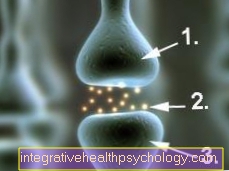







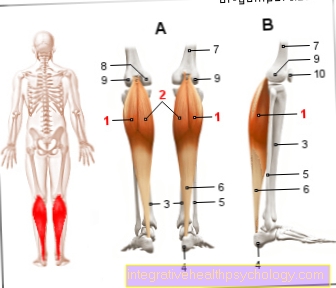



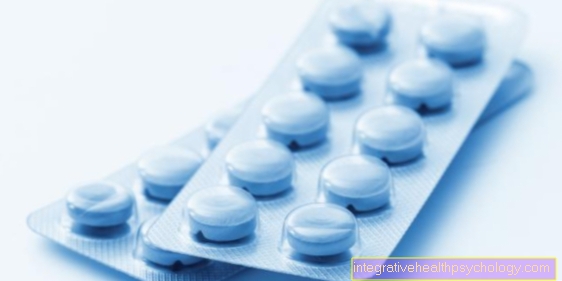


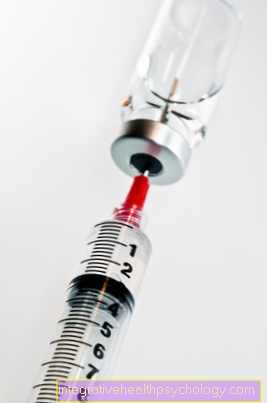






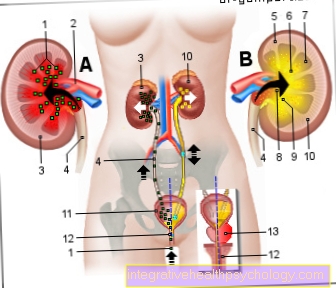


.jpg)